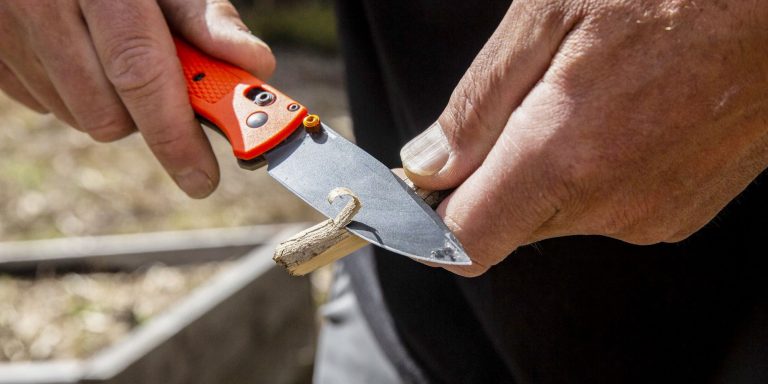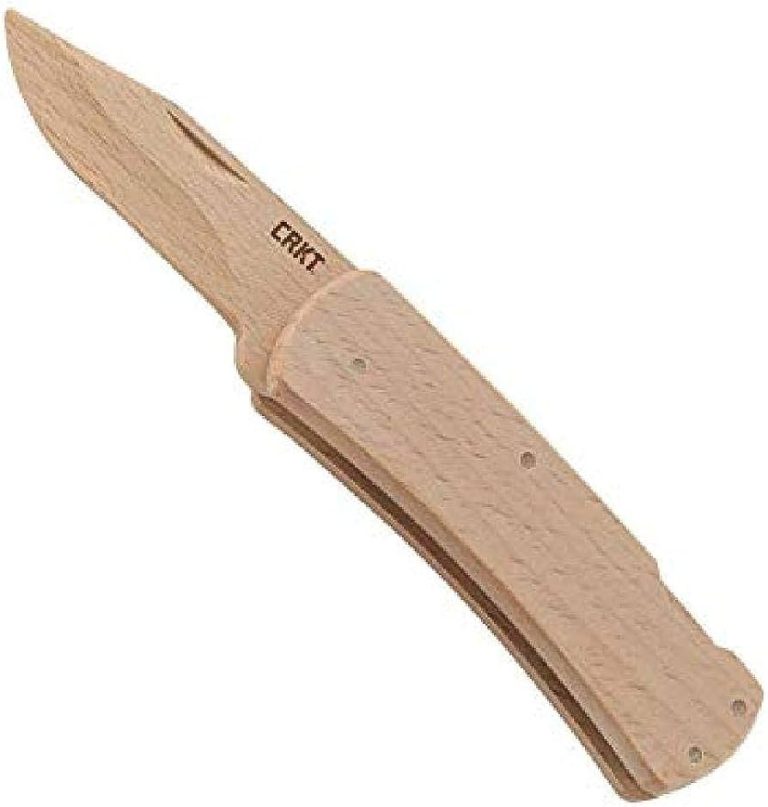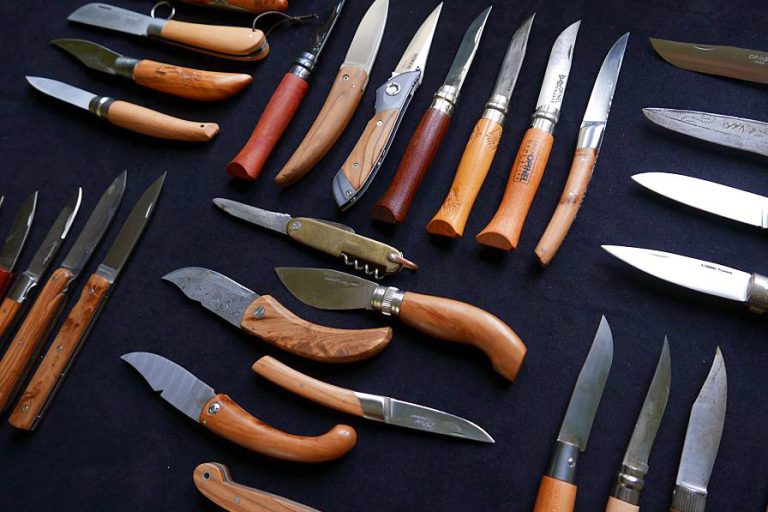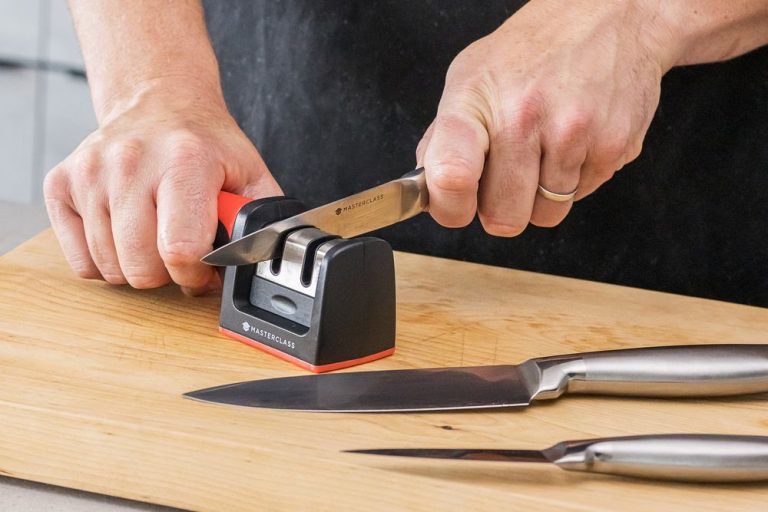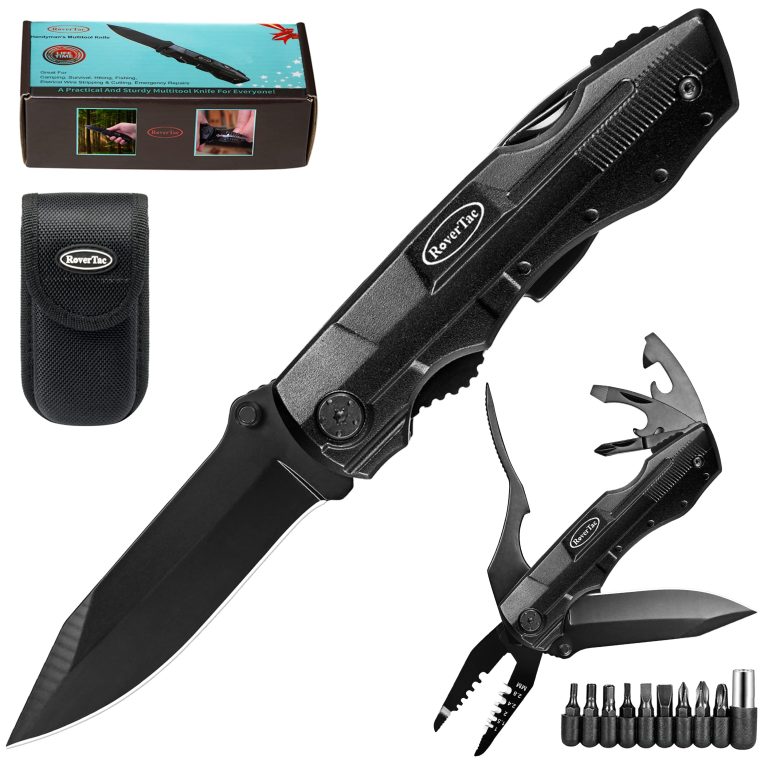How to Sharpen a Knife Without a Sharpener
To sharpen a knife without a sharpener, you can use a ceramic mug or a piece of sandpaper to achieve a sharp edge. Cutting on the rough surface will help realign the blade, making it sharper.
Additionally, you can also use a honing rod or the bottom of a ceramic plate to sharpen the knife. Just be sure to use caution and work slowly to avoid any accidents.
Sharpening A Knife: The Basics
When it comes to sharpening a knife without a sharpener, there are several methods you can try. Having a sharp knife is essential for many reasons. A sharp knife provides better control, reduces the risk of accidents, and makes your cutting tasks much easier. Here are some common methods you can use to sharpen a knife without a sharpener:
- Using a honing rod: A honing rod is a long, cylindrical sharpening tool that helps realign the edge of your knife. Hold the rod vertically and swipe the blade down its length.
- Using sandpaper: Sandpaper can be used to sharpen a knife by folding it around a wooden block and using it to gently grind the blade edge.
- Using a coffee mug: The unglazed bottom rim of a ceramic coffee mug can act as a makeshift sharpener. Hold the knife at a 20-degree angle and run the blade along the rim in a sweeping motion.
- Using a whetstone: Wet the whetstone and place it on a stable surface. Hold the knife at a consistent angle and move it across the stone in a sweeping motion, alternating sides.
- Using a belt: Secure a leather belt tightly and run the blade along its surface in a stropping motion to remove dullness.
- Using a nail file: Use a nail file with a fine side to gently file the blade edge at a consistent angle.
Remember, regardless of the method you choose, take your time and be cautious. Always prioritize your safety when sharpening a knife without a sharpener.
Using Household Items To Sharpen A Knife
When it comes to sharpening a knife without a sharpener, there are various household items you can use. One simple method involves using a ceramic mug. Just invert the mug and run the blade along the unglazed bottom edge at a 20-degree angle. Another option is to use a honing rod. Hold the rod vertically and swipe the blade down its length, ensuring consistent pressure. If you don’t have a honing rod, a butter knife can be used as an alternative. Hold the dull knife at a 20-degree angle and stroke it along the blade’s edge. Lastly, a nail file can work wonders as a makeshift honing tool. Gently slide the file along the edge at the same angle as you would with a honing rod. Remember to clean your knife and these alternative tools once you’re done to maintain their efficacy. A sharp knife ensures safer and more efficient cutting in the kitchen.
Sharpening Techniques Without A Sharpener
Sharpening Techniques Without a Sharpener
When it comes to sharpening a knife without a sharpener, understanding the importance of angle is crucial. With the right technique, you can achieve a sharp edge using different methods:
| Technique | Description |
|---|---|
| Using Wet Stones | Wet stones are effective for sharpening knives. Soak the stone in water, place it on a stable surface, and hold the knife at a consistent angle as you move it across the stone. |
| Sharpening with Sandpaper | Sandpaper can be a convenient option. Start with a coarse grit and gradually work your way to a finer grit, maintaining the knife’s angle with each stroke. |
| DIY Knife Sharpening Jig | Creating a DIY knife sharpening jig allows for more control. Secure the knife in the jig and follow the manufacturer’s instructions to achieve the desired sharpness. |
| Razor Strop Sharpening Method | A razor strop is a leather strip used for final polishing. With the blade facing away from you, gently drag the knife along the strop to refine its sharpness. |
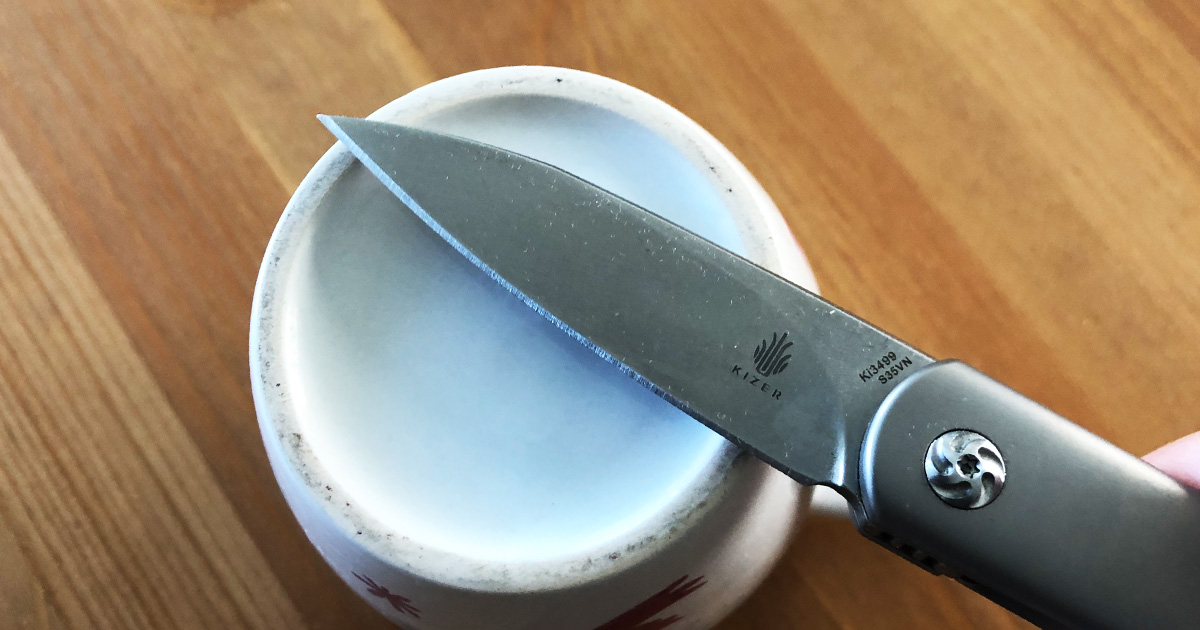
Credit: blog.knife-depot.com
Maintaining A Sharp Knife
Maintaining a sharp knife is crucial for efficient and safe cooking. Proper knife maintenance not only extends the lifespan of your knife but also enhances its performance. Storing knives properly is the first step towards maintenance. Using a knife block or magnetic strip helps to prevent the blades from getting damaged and keeps them easily accessible.
Honing a knife is another effective way to maintain its sharpness. Using a honing steel, you can realign the blade’s edge, improving its cutting ability. Regular cleaning and drying of knives are essential to prevent corrosion and rusting. Hand wash your knives with mild soap and warm water, ensuring to dry them thoroughly before storage.
Remember that **sharp knives are safer** as they require less pressure to cut, reducing the chances of accidents. By following these simple practices, you can enjoy the benefits of a sharp knife without relying on a sharpener.
Conclusion
To wrap up, sharpening a knife without a sharpener can be an essential skill to have in certain situations. Whether you’re out in nature, facing a dull blade in the kitchen, or simply want to save some money, these techniques can come in handy.
Remember, using a coffee mug, sandpaper, or a honing rod are all viable options to get the edge back on your blade. However, take caution and exercise patience when attempting these methods to avoid any accidents. It’s important to mention that regular maintenance is key to maintaining a sharp knife.
By adopting good knife habits, such as proper storage and regular honing, you can prolong the sharpness of your blade. So, the next time you find yourself without a sharpener, don’t panic! Just remember these simple techniques and you’ll be able to keep your knives sharp and ready for any task.
Happy sharpening!

